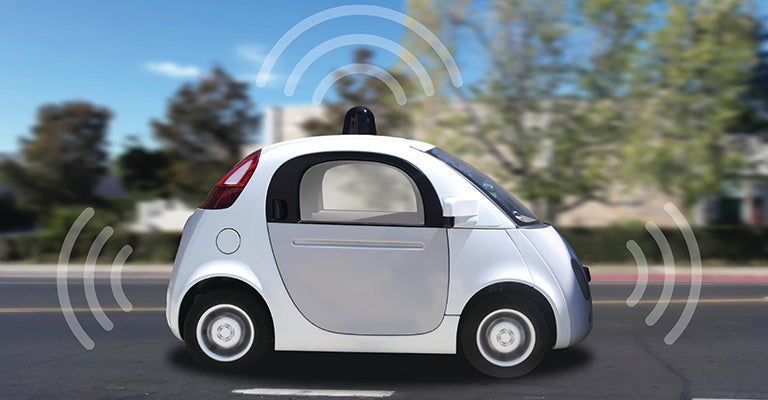Physics Major Presents Research on Autonomous Vehicles

Physics major Isabel Binamira conducted research into the impact of autonomous vehicles and presented her findings at the annual meeting of the Transportation Research Board.
January 17, 2018 — Georgetown College physics major Isabel Binamira (C’18) recently presented a research project on the impact of autonomous vehicles at the 2018 annual meeting of the Transportation Research Board.
Binamira worked on the project with Amitai Bin-Nun of Securing America’s Future Energy (SAFE), an energy independence advocacy group where she interned in 2017.
ENERGY IMPACTS
The College senior created a framework that uses surveys, case studies, and mathematical modeling to estimate the impact of autonomous vehicles on different areas.
“We were looking at where people live, how many cars they own, how many miles traveled in a vehicle, and — because it’s an organization focused on energy security — how it would impact their energy use in the future,” Binamira said.
Binamira found that expanded use of autonomous vehicles (AVs) is expected to accelerate urban sprawl but decrease fossil fuel consumption, as more people choose predominantly electric AVs over traditional cars. She hopes her findings will be useful to science and transportation policymakers, business leaders, and academics, as they navigate the public impacts of this technological change.
“Our framework could be used to narrow down a wide range of uncertainties that exist within AV predictions,” Binamira said. “People aren’t sure if the impact on fuel consumption might be anywhere from -40% to +90%, but if you use this framework and input a specific type of AV, you can narrow down that uncertainty quite a bit — to, say, -40% to -20%.”
A PHYSICIST’S SKILLSET
A native of the Philippines who attended high school in New Hampshire, Binamira has been interested in the sciences since her teenage years.
“I decided to take an extra physics class toward the end of high school, and I loved it,” she said. “Then I took a gap year and explored different things I might want to do in college. None of it really stuck, and I kept coming back to physics.”
Binamira found Georgetown via recommendations from friends and relatives and started on the Hilltop in 2014. She worked as a photographer and later Photo Editor for The Hoya and explored classes in physics, mathematics, and sociology.
By her sophomore year, Binamira had found a niche in the Department of Physics and chose it as her major, along with a minor in sociology. When Department Chair Jeffrey Urbach heard that SAFE needed an intern to help with its autonomous vehicles research project, he forwarded the opportunity to students. Binamira applied and soon discovered she was a perfect fit.
“Isabel was an enormous asset to SAFE, and her research findings are a significant contribution to the field,” Bin-Nun said. “She thinks clearly and rigorously, and deftly applied the physicist skillset to a novel question on AVs.”
SOCIOLOGICAL THINKING
While much of her work involved complex science and mathematical modeling, Binamira believes her sociology background was vital to the project.
“Some of this project was about predicting how people would react to technology — whether they’d move, or whether they’d give up a car,” she said. “It’s more to do with how people think and how society works, so it was great for me to apply the kind of thinking we do in sociology classes.”
Working on the SAFE project taught Binamira that a world filled with autonomous vehicles could be right around the corner — we’re just being careful about implementing it.
“A lot of the technology is there,” she said. “We just have to figure out how to introduce it in a safe way that makes sense. … It’s not necessarily all bad or all good — you just need to understand it.”
— Patrick Curran